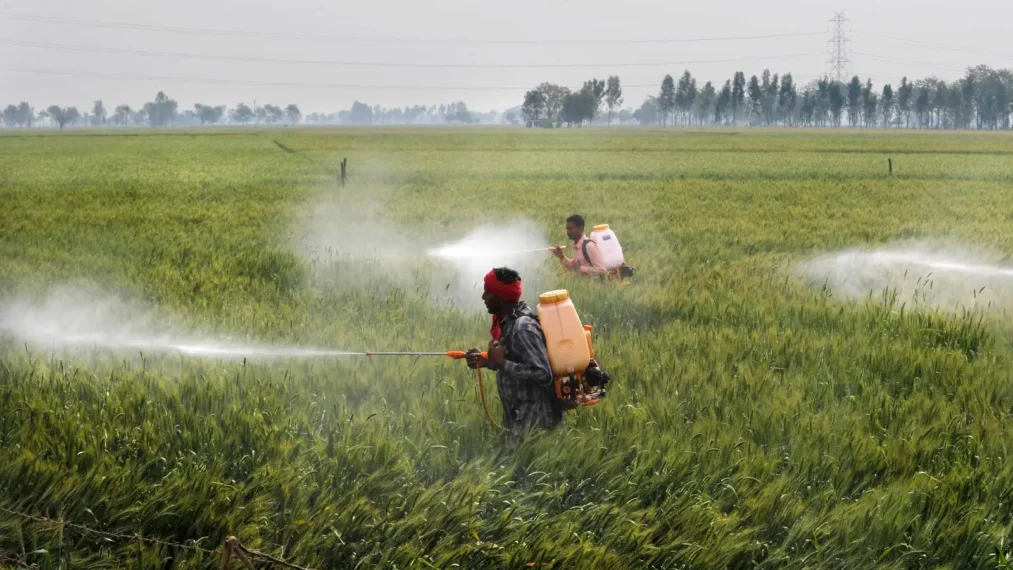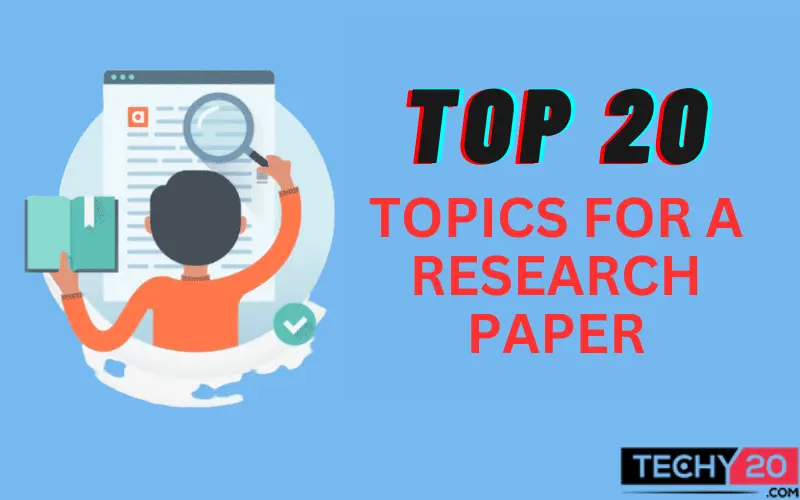Since you’ll undoubtedly write a lot of research papers in college, it’s imperative to learn how to select the top topics for your papers. Sadly, not all the subjects that fascinate you could be so simple to write about. We know that writing research papers can be time-consuming; therefore, our authors at our custom research paper writing service put a lot of effort into coming up with only the most significant research paper themes. To get a better clarification on this, let’s look into detail about the Top 20 topics for a Research Paper-
1. Animal Rights
Agriculture, animal ownership, and the way of life are seriously threatened by animal extremist organizations and other NGOs. These radical non-governmental organizations have developed into sizable lawmaking organizations over the years through fundraising under the pretense of animal welfare and other causes. These organizations are now all linked, exchanging personnel, ideologies, initiatives, legal actions, writing, funding, and promotion of legislation.

2. Human Rights
The interdisciplinary publication Human Rights Review offers an academic venue for examining human rights concerns and their underlying factual, analytical, and philosophical underpinnings. To connect the research to more general human rights challenges, it aims to theoretical contextualize human rights practices and policy.

3. Sexual Harassment
Women have experienced every aspect of life, from the grandeur and respect shown during the Vedic period to the rejection and servitude they experienced throughout the post-Vedic period, and finally, the struggle for equality, acceptance, and survival in the modern world. The disadvantageous position of women, however, has persisted through all of these eras.

4. Alcohol
Alcohol use, especially binge drinking, is a significant risk factor for several health issues and, as a result, contributes significantly to the worldwide burden of illness. Infectious diseases, cancer, diabetes, neuropsychiatric disorders, cardiovascular diseases, liver and pancreas diseases, and accidental and deliberate injuries are the most prevalent disease categories that are entirely or partially attributed to alcohol intake.

5. Plagiarism
A severe type of scientific misconduct is plagiarism. Plagiarism is using someone else’s words or ideas and presenting them as one’s own. It suggests plagiarism in the field of medical writing. Since the invention of electronic publishing, the “copy and paste” culture has spread worldwide, and Indian medical literature is no exception.

6. Child Abuse
Child abuse & neglect are severe issues that affect the entire world. They can take the shape of physical, sexual, emotional, or simple disregard for the child’s needs. These elements may cause the youngster great, irreparable psychological harm. Child protection has always been as primarily the responsibility of those working in the social services, medical, mental health, and legal sectors.

7. Dream
One of the fundamental techniques used in psychological dream study is dream content analysis. The technique is simple, but there are a few hazards to watch out for if you want reliable results. The current article describes how to create new scales and issues with the validity and reliability of content analytic scales.

8. Depression
Depression is a mood condition that can have serious consequences, such as mental collapse, self-harm, and suicide. Depression may have genetic, social, and personal variables as causes. The public’s perceptions of depression, which are shaped by a complex interaction of cultural discourses and media, could not, however, be consistent with the state of the science.

9. Deforestation
One of the most urgent environmental problems the world is now dealing with is deforestation. It is the human-caused conversion of wooded land to forested land. The piece of land with a high concentration of naturally occurring trees is transformed to meet a need in society, and deforestation takes place. Shifting agriculture, rotational felling, other biotic pressures, diverting forest areas for development purposes, etc., are the leading causes of the decline in forest cover.

10. Environment Pollution
An international peer-reviewed publication called Environmental Pollution provides excellent research papers and review articles on all facets of environmental pollution and how it affects ecosystems and people’s health. It accepts high-quality process-oriented and hypothesis-based articles that present findings from original and novel research and add new information to help address environmental pollution-related issues at a local or global level.

11. Population Control
A population’s demographic makeup can be artificially changed by using policies that reduce immigration, emigration, and, or fertility. Population control now refers to initiatives to slow down the growth of the world’s population. Some contend that population increase must be reduced since it is a significant cause of problems like environmental deterioration, resource shortages, and poverty.

12. Family Values
The primary formats and techniques used to examine this issue include observation, interviews, questionnaires, psychological tests, and pedagogical experiments that allow for the verification of the efficacy of the suggested program for the development of family values in teenagers from large family units.

13. Ethics
The integrity of science, respect for human rights and dignity, and cooperation between science and society depend on research ethics. These guidelines guarantee that study subjects’ involvement is free, informed, and secure. The credibility of your study will also suffer if you violate research ethics because it will be difficult for others to believe the results of your work if your techniques are immoral.

14. Pesticides
Chemical pesticides are used by both commercial and home gardeners to eradicate illnesses, weeds, and pests from their farms to boost output. Although using pesticides might increase production, their haphazard and excessive usage can have a negative influence on the environment and people’s health. The current state of pesticide use does not appear adequate; so-called safe pesticides also exhibit negative long-term consequences, and issues like bio-accumulation and bio-magnification are getting worse by the day.

15. Divorce
Divorce was once seen as one of the more uncommon social occurrences in the Indian context. The severe restrictions controlling traditional Indian life started to be replaced when society began to change due to modernization and technological advancement. When women started working, it created a momentum that exacerbated the gender gap due to the shift in women’s status.

16. Obesity
A significant global public health issue is obesity. The prevalence of obesity has increased globally during the last few decades. Over 650 million, an estimated 1.9 billion overweight adults in 2016, were obese. There is a pressing need for viable treatments and fuller knowledge of the obesity risk factors.

17. Parenting
The interaction between parents and adolescents has long been a popular topic for research. Scientists have discovered that many elements of parent-adolescent relationships are strongly correlated with parenting styles (e.g., authoritative, authoritarian. . The current study analyzed the relationships between parenting practices and aspects of the parent-adolescent relationship, as well as the mediating roles played by adolescents’ expectations of behavioral independence and perceptions of parental authority. It also examined whether adolescent gender had any bearing on these relationships.

18. Gambling
Even though gambling was once thought to be a phenomenon that only affected adults, the age of onset has been steadily lowered, and younger people now have easier access to the game. According to the literature, people who become addicted to gambling as adults start playing far earlier than people who don’t gamble but don’t go on to have an actual disorder. According to this viewpoint, the study’s fundamental premise was that the phenomena of gambling behavior in this younger demographic is already related to particular traits that may help detect risk factors.

19. Homelessness
There has been a significant body of writing about homeless individuals since the early 1980s. Several academics have carried out comprehensive surveys and engaged in intensive data analysis to try to define the features of homeless persons, notwithstanding the impressionistic descriptions of homelessness in the United States made by some. In terms of age, ethnicity, familial situations, and health issues, homeless persons are diverse and unique. Additionally, the characteristics of the homeless population vary greatly throughout communities. Even the recent rise in the number of homeless families is not nationwide.

20. Adoption
Children who were adopted as infants are affected by adoption for the rest of their lives. Later in adulthood, adopted children develop a distinct sense of adoption. People who have experienced trauma or maltreatment may remember these incidents, which further taints their self-perception. A child’s adoption experience may also be impacted by issues relating to trans-racial, cross-cultural, and special needs. Every adopted child feels some loss over losing their biological family, their history, and their culture.





















